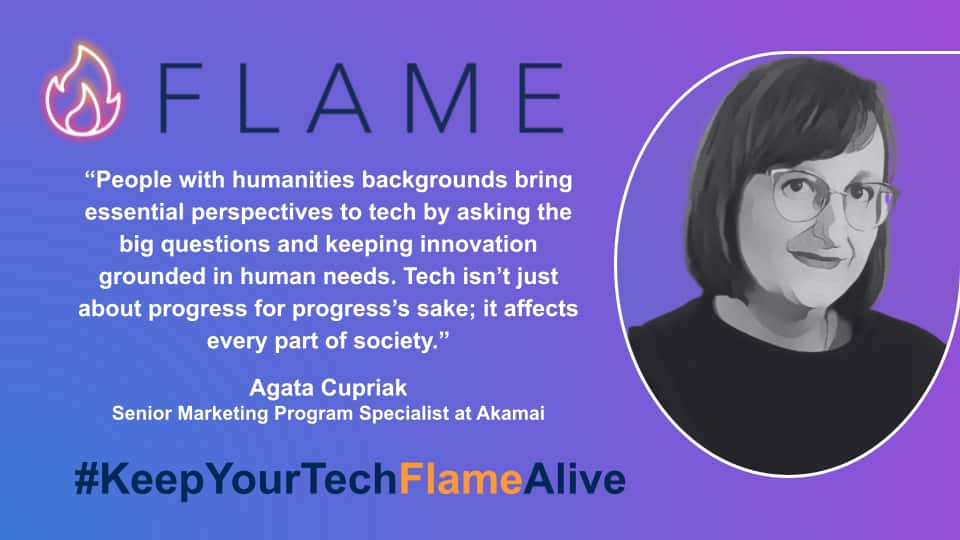The Importance of Allyship for Women in Tech

In this “Women in Tech” blog series post, Lead Security Researcher Ophir Harpaz sheds light on the importance of fostering supportive relationships and a healthy communication style, and discusses how collaboration among women in a male-dominant field like tech can create an inclusive and empowering environment.

Ophir Harpaz became a part of the Akamai team in 2021 through the Guardicore acquisition and now leads the security research team in Akamai’s Enterprise Security Group (ESG). Ophir is passionate about collaborative work, knowledge sharing, and problem-solving in the security domain — and she thrives on finding innovative solutions to security threats within the industry.
Ophir earned a bachelor’s degree in computer science and then took a cybersecurity and data science course, in which she learned about reverse engineering.
“This course was actually the first time I realized cybersecurity was interesting for me,” says Ophir, “In particular, doing reverse engineering — taking an executable file or a program, reading its low-level code and machine code to understand what it really does. That was the first time I experienced reverse engineering and it’s when I realized I wanted to do that for a living.”

Security research is a team event
Ophir enjoys leading a security research team and helping them accomplish successful research projects.
“I love seeing other people succeed on the team. I like seeing researchers under my leadership really insist on making things work, and eventually get there,” she says. “Things may not be flawless in research. They actually most often aren't, and seeing [my colleagues] struggle with things and resolve them or make them actually work is a pleasure.”
Investigating malware, researching vulnerabilities
As a leader, Ophir spends her time with her research team discussing and brainstorming their research efforts, giving direction, and helping them plan ahead for their upcoming subtasks and deadlines.
“We investigate malware campaigns; we do vulnerability research and try to find security flaws in various applications or protocols. We analyze public vulnerabilities to get more knowledge about them and alert our customers on current threats and how to mitigate them,” says Ophir.
Understanding cybersecurity and security research
As Ophir grew into her role, she learned that security research is more complicated, with a much wider range of responsibilities, than she originally thought.
The Akamai ESG research team tackles all challenges related to enterprise security, but Ophir’s team also operates internal systems research and works on the brand aspect of security research.
“Our domain is quite unique. Our knowledge domain is enterprise security, [yet] we measure ourselves using marketing goals,” says Ophir. “Our goal is to strengthen the Akamai brand as a security leader. What makes our work successful is how many people engage with our content [and] with our research.”
Using social media to position Akamai as a security leader
To help position Akamai as a pillar in threat intelligence and as a go-to resource for security providers, Ophir looks online, specifically at social media, to make sure that people worldwide know that Akamai has expert knowledge, and that the messaging is actually reaching the community.
Ophir monitors how many people visit her team’s blog posts, and how many people engage with their tweets about cybersecurity threats, solutions, and investigations.
“Today, as a manager of a research team, my work is mostly to make sure that our content is widespread. And that it's well understood, shared, and engaged with. So, I tweet on the research that we do. I share links to our blogs. I highlight why these pieces of research are valuable for both customers, but also other security practitioners in the community.
“It's a great way to see us as a resource that is always on top of current threats, new attack techniques and vulnerabilities, and the overall threat landscape.”

The impact of allyship: Being part of a community for women in technical roles
The success of a woman in the tech industry may directly depend on her environment and the support she’s given in that environment. As the only woman in most of her interactions, Ophir has observed that one of the biggest challenges faced by women in tech is not a lack of confidence, but a lack of support from others.
It helps to have a community in which women can have mentoring opportunities. In Israel, where Ophir is based, she became a part of a community for women in technical roles, such as engineering, research, and software development.
“I don't think I've had a formal mentor,” says Ophir, “but whenever there's a challenge at work or a challenge on how I see my career, I always go to friends of mine and consult with them. They are my eternal mentors. It's good to have a group of friends like that — who understand, and can give sound advice on what's going on.”
A good ecosystem in which to grow
The community provides the women with a “good ecosystem to grow professionally.” It helps women tackle the challenges of being a woman in tech, and it runs several programs to help them find jobs and side projects. “Where you are, where you work, and how many allies there are to support and help you [matters],” says Ophir. “Women need communities or external support, mostly because many organizations today don't come with this support, and leadership is [still] male-dominated.”

Women in tech stand out
Ophir contends that being a woman in the tech industry leads to standing out, whether positively or negatively, primarily because women remain a minority in the field. In today’s landscape, female leaders, especially in tech positions, are still scarce, providing limited role models for aspiring women to work in the industry.
“On a day-to-day basis, I’m surrounded by more men than women. I miss interactions with women sometimes. Women need to see other women in technical roles. This is one of the things that keeps me doing what I do,” says Ophir.
Acknowledging gender bias
The awareness of being a woman in tech is ever-present and can cast a shadow of gender bias on how well women perform. This awareness of women in technology is not static; it is often driven by the surrounding environment and personal successes and failures.
“Being a woman in tech … it's always there; on stages and conferences, on Twitter [now known as X],” says Ophir. “So when you do something impressive, then you're being a woman who stands out in a good way, and when you do something embarrassing, then you stand out in a bad way. It's always there.”
Healthy communication can help build an inclusive culture
Ophir believes there are changes that can be made at the organizational level that can lead to a more inclusive culture.
“Women communicate a bit differently, and they bring something to the table that men usually — often — don't. Women communicate in a more open manner. They are less afraid of expressing emotions in the workplace.”
Ophir believes that the way women communicate is healthy and can create a feeling of inclusiveness. “Personally, I'm trying to incorporate more of this type of communication between me and my team, and between my colleagues and other team leads in my group.”
Inclusion must come from those who lead
Ophir believes that building a more inclusive industry depends on leaders who think, plan, and communicate with an openness to opinions, perspectives, and thoughts, and show respect for each one of their colleagues.
“Every leader should really put in an effort to diversify the group that they lead. I think inclusivity will only work if it [begins with] the most senior or executive managers.”




